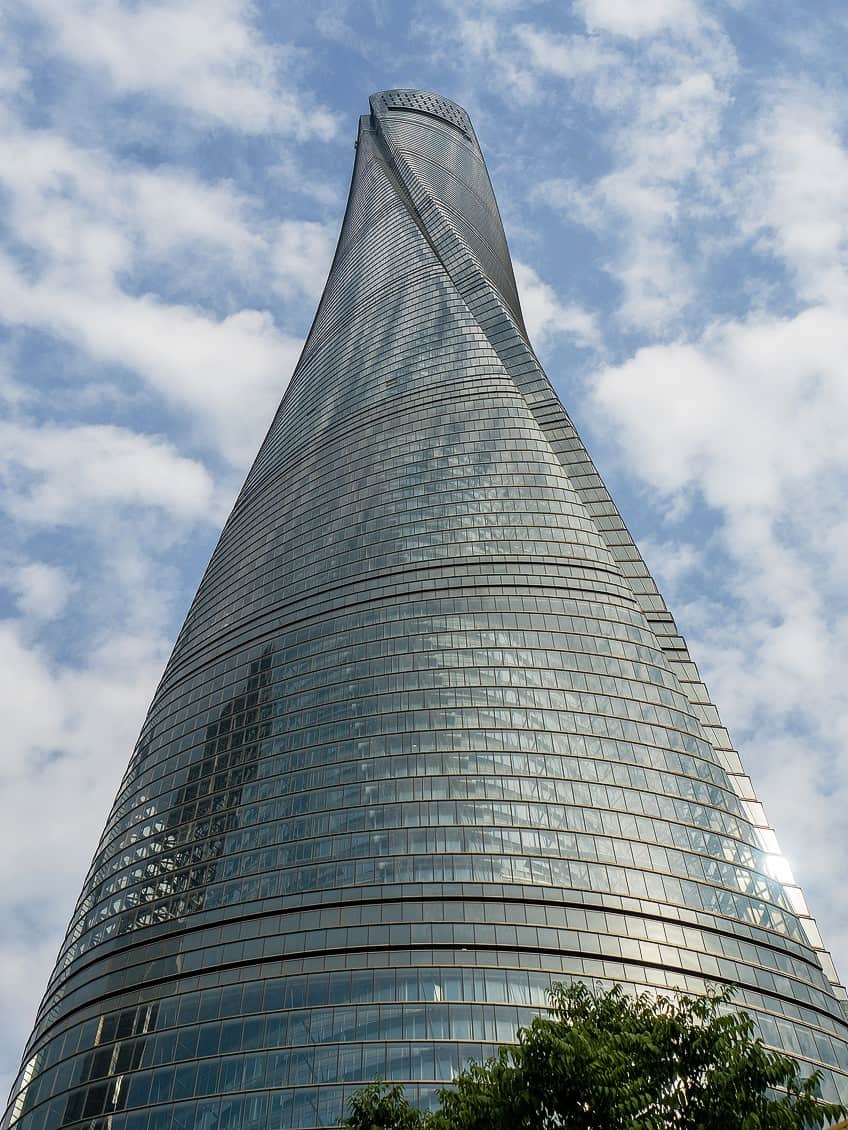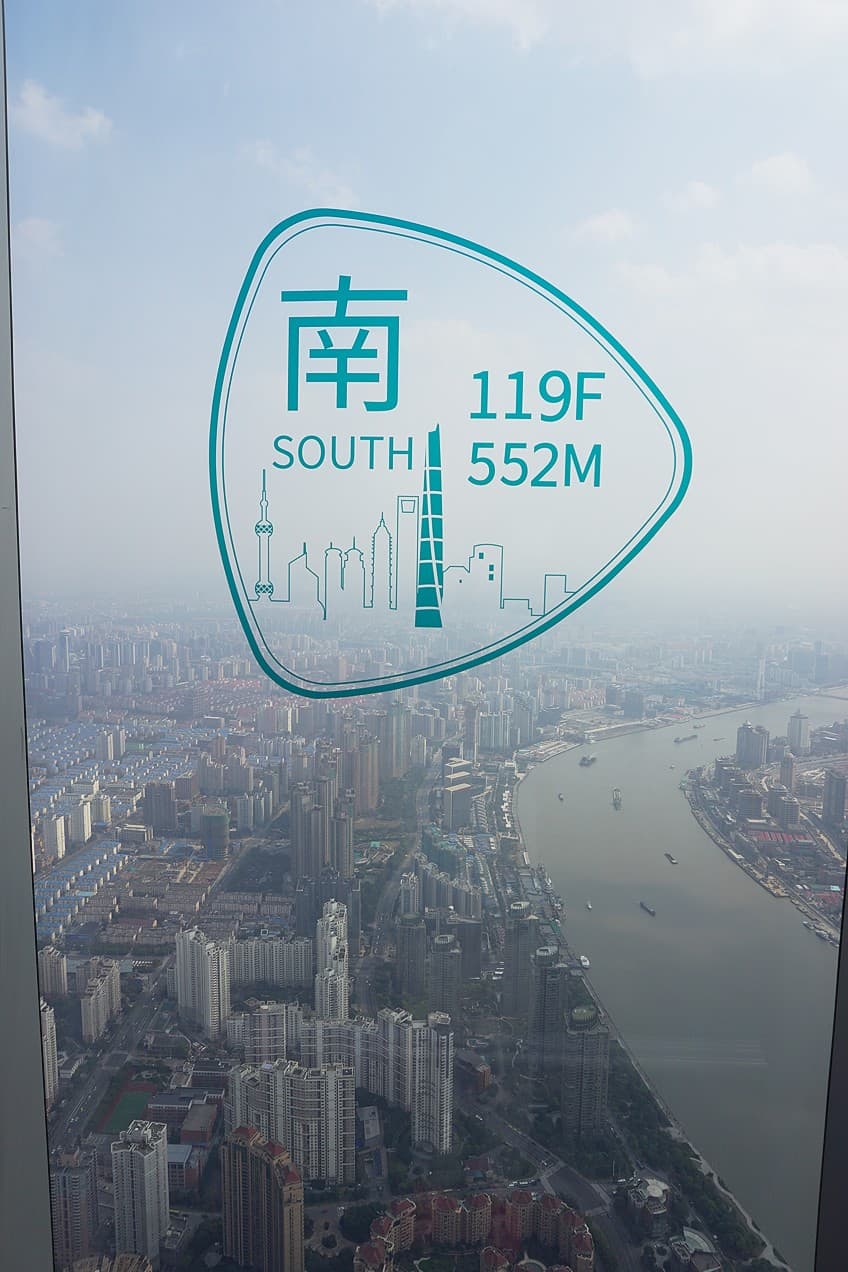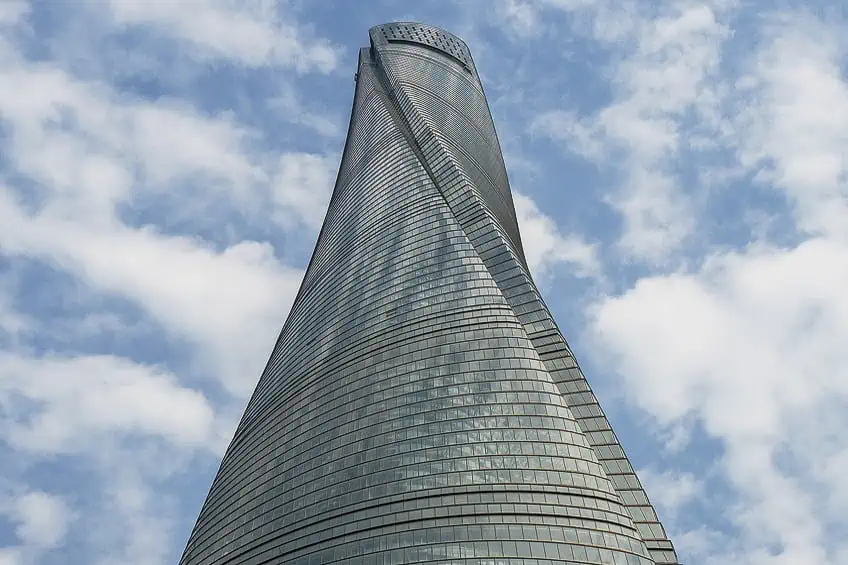Shanghai Tower – Inside the Shanghai Tower
The Shanghai Tower is the third-tallest skyscraper in the world, and also the tallest in China. However, this is not what makes it one of the most amazing skyscrapers in the world, but rather many of its sustainable aspects. In this article, we will examine the interior and exterior architecture of the Shanghai Tower, the sustainable elements of this Shanghai skyscraper, the architects behind the building, and the history of it. Keep reading to learn more about the Shanghai Tower and what makes it tick!
A Look at the Shanghai Tower
| Architect | Marshall Strabala (1961 – Present) and (1990 – Present) |
| Date Constructed | 2008 – 2014 |
| Function | Mixed-use |
| Materials Used | Steel and concrete |
| Height | 632 m (or 2,073 ft) |
| Location | Shanghai, China |
There are many tall buildings in this world, but few of them are taller than Shanghai Tower. The reason for this is because it’s the third-tallest building in the world. This megatall skyscraper only has two skyscrapers that have surpassed it. There is the Burj Khalifa in Dubai and Merdeka 118 in Kuala Lumpur. The Shanghai Tower, on the other hand, sits at a massive height of 632 m (or 2,073 ft), but that’s just the height. So, how many floors does Shanghai Tower have? It has 128 stories and because of the immense height of this Shanghai skyscraper, it is the tallest building in China.

Many of the top ten tallest buildings in the world are located in China, such as the Ping An International Finance Center in Shenzhen and the Guangzhou CTF Finance Center in Guangzhou, and the Shanghai Tower tops them all. For this reason, it is definitely one of the most famous skyscrapers in the world. In addition to this, it holds the record, along with the aforementioned Ping An Finance Center, for the tallest observation deck in the world. If you want to go immensely high in the sky and gaze at the surroundings from a height of 562 m (or 1,844 ft), then you have two options to choose from. However, the Shanghai Tower is likely the more famous of the two thanks to its superior overall height.
The History of the Shanghai Tower
The Shanghai Tower is not a very old building as it was completed in 2014, and so it does not have a particularly long and detailed history that can be followed. However, the initial plans for a building in this location began as early as 1993. The idea was for there to be three structures that were all immensely tall in this general region. One of them, the Jin Mao Tower, was finished in 1999 while the next one, the Shanghai World Financial Center, was finished in 2008. These buildings were adjacent to one another, and only a few years later, they would finally be joined by the third building in this architectural trilogy.
The tower itself is owned by a variety of Chinese companies and state-owned entities, and through this array of support, the Shanghai Tower construction could finally get underway. It would cost well over $2 billion to construct this Shanghai skyscraper, but as the plans for the building were rather illustrious, it was considered to be well worth the cost.
The groundbreaking began in 2008, and construction started shortly thereafter. By the time 2011 had rolled around, the floor-by-floor construction method that had been implemented had led to the growth of the Shanghai Tower height to 18 floors in terms of the reinforced frame. The concrete interior had reached the 15th floor by this point in time.
By the end of that year, it had already reached the 30th floor, and so it was proceeding rather quickly. However, there was one hiccup in the plans when cracks started to appear in 2012 around the construction site, but this was ultimately blamed on something else. The weight of the skyscraper was not to blame and so construction could resume without any further issues. By the time it reached the beginning of 2014, the building was nearly done, and the crown soon surpassed the 600 m (or 2,000 ft) mark, and once that happened, the construction was nearing its end already.
The interior was completed by later that year, and there were plans to officially open the tower in 2015. This went off without a hitch and the Shanghai Tower was officially open for business.
However, despite being one of the most stunning architectural wonders of the modern era, the Shanghai Tower struggled to attract tenants. This was because of a bureaucratic issue with regard to the difficulty in acquiring certain necessary permits. The issue was eventually resolved to a more satisfactory extent, but the tower still struggled to find occupants. By 2019, a total of 55 floors of the total number of 128 floors, were completely empty. The hotel also only opened in 2021.

All of this ultimately meant that while the Shanghai Tower is a marvel of skyscraper engineering and a stunning sight to behold, it has not necessarily become the financial success that was desired. However, many of the most famous skyscrapers in the world struggled to attract tenants, and so perhaps there is still hope that the Shanghai Tower will eventually attain the high level of occupancy that such a gorgeous and sustainable structure deserves.
The Architecture Outside Shanghai Tower
The Shanghai Tower was designed by architects from Gensler, with a Shanghainese architect heading up the team, and these architects designed the Shanghai Tower to be a highly energy-efficient construction in which the building, as a whole, was separated into nine distinct zones. Each of these zones would have specific functionality. There are zones for office space, zones for retail, and also zones for leisure usage. The general Shanghai Tower construction revolves around the use of nine separate cylindrical buildings that are then stacked on top of one another. This gives this Shanghai skyscraper its distinctive appearance. Each of these separate structures is united around an inner glass façade, but regardless of this, each of these “buildings” within Shanghai Tower can be seen as somewhat independent.

Each of these structures contains their own atriums, restaurants, retail space, gardens, and much more. It is a mixed-use structure that, aside from its unique approach to its overall design, also includes an interesting architectural feature in terms of its façade. The exterior of the building makes use of a transparent glass façade with a double-panel design.
Many skyscrapers tend to use reflective glass, but because of the double-panel design, the structure is able to better reduce heat absorption and make the daily lives of those within it just a little more comfortable. This is one of the most innovative aspects of the Shanghai Tower construction and one that will likely start to be further implemented in later structures.
In addition to this, as a structure constructed around a “green” approach, it also includes rainwater capture and wastewater systems that are reused for internal use, and because of the twisted design of the façade, it is able to reduce wind loads. This, additionally, allowed the construction of the building to use about 25% less steel than is usually needed in structures of this size. So, Shanghai Tower is a rather green structure that will likely influence sustainable architecture well into the future.
The Architecture Inside Shanghai Tower
We have looked at things outside this building, but what about inside Shanghai Tower? The internal Shanghai Tower floors, arranged around its nine-cylinder design, allow for numerous locales within each of these nine zones. Each of these zones is arranged around a central trunk-like structure as the cylinders emerge out of it with each having their own panoramic views and their own amenities. One of the useful internal aspects of the Shanghai Tower is the general lack of the kinds of indoor air conditioning that is usually necessary, thanks to the aforementioned double-panel glass façade design of the building. To further add to the interior’s more pleasant surroundings, and its sustainable design, the heating and cooling is supplemented with geothermal energy.
One of the most stunning locations to visit inside Shanghai Tower is the restaurant atop the structure, and this is currently the world’s tallest restaurant.
It forms part of the Four Seasons hotel that is located in the tower, and as part of it, there are also swimming pools. These swimming pools are also, obviously, some of the highest in the world. There is even one pool that has a view, and that view is 393 m (or 1,289 ft) in the sky. Lastly, when Shanghai Tower was first designed, it had the world’s fastest elevators. These elevators can travel at 20.5 m (or 67.3 ft) a second. However, it was surpassed by the Guangzhou CTF Finance Center’s elevators in 2017 when they could move about half a meter faster per second.

The Architects of the Shanghai Tower
The Shanghai Tower was primarily designed by two architects. Jay Marshall Strabala is one of the most prolific modern architects in the skyscraper space, and he has had a hand in the design of many around the world. For instance, he worked on the Burj Khalifa, the tallest building in the world. He has since left the company he was with when the Shanghai Tower was constructed, Gensler, to find his own architecture firm, 2DEFINE Architecture. However, he did not head up the design of the Shanghai Tower, and that was instead the work of Jun Xia.

Jun Zia was the man who is reported to have been the head of the design around Shanghai Tower, but this is not entirely confirmed. However, when working on the Shanghai Tower, he is reported to have said that while the tower was not going to be the biggest in the world, it was going to be the best. He is also credited by the founder of Gensler to have landed them the company their role in the design of the Shanghai Tower. He is still a rather young architect, and so his career is likely still only just kicking off but having led the design of the third-tallest tower in the world will likely look pretty good on a resume.
We have come to the end of our look at the Shanghai Tower. We have examined the architecture of this massive skyscraper, on both the inside and the outside, as well as looked at the architects who worked on this Shanghai skyscraper, and discussed the brief history of the building. Hopefully, you have learned a good deal about the third-tallest building in the world, and, so, all that’s left to say is that we hope you have a great educational journal ahead as there are many other buildings out there for you to learn about!
Frequently Asked Questions
Where Is the Shanghai Tower?
The Shanghai Tower is, as the name would conveniently suggest, a skyscraper in Shanghai, China. This Shanghai skyscraper is more specifically located within Lujiazui, Pudong, in the city. This is also one of the most populous cities in the world, and so it makes sense that one of the tallest buildings in the world is located in one of the places that may need the many uses of such a massive tower.
How Tall Is the Shanghai Tower?
The Shanghai Tower’s height is an incredible thing to behold. It is the third-tallest building in the world, and it is also the largest building in the world to maintain a LEED Platinum certificate, which is a certification for structures that have conformed to certain environmental protections and sustainable plans in construction and design. But how tall is the Shanghai Tower? It is 632 m (or 2,073 ft) in height, and from this immense height, it towers above everything else in the city (and in the country, but that’s less immediately noticeable than a city skyline).
How Many Floors Does Shanghai Tower Have?
The number of Shanghai Tower floors, much like the height in general, is immense. This mixed-use building maintains a staggering array of floors. But how many floors does Shanghai Tower have? It has 128 stories to go with its incredible height. This makes the Shanghai Tower height one that is considerable in its incredible scope.
Justin van Huyssteen is a writer, academic, and educator from Cape Town, South Africa. He holds a master’s degree in Theory of Literature. His primary focus in this field is the analysis of artistic objects through a number of theoretical lenses. His predominant theoretical areas of interest include narratology and critical theory in general, with a particular focus on animal studies. Other than academia, he is a novelist, game reviewer, and freelance writer. Justin’s preferred architectural movements include the more modern and postmodern types of architecture, such as Bauhaus, Art Nouveau, Art Deco, Brutalist, and Futurist varieties like sustainable architecture. Justin is working for artfilemagazine as an author and content writer since 2022. He is responsible for all blog posts about architecture.
Learn more about Justin van Huyssteen and about us.
Cite this Article
Justin, van Huyssteen, “Shanghai Tower – Inside the Shanghai Tower.” artfilemagazine – Your Online Art Source. July 3, 2023. URL: https://artfilemagazine.com/shanghai-tower/
van Huyssteen, J. (2023, 3 July). Shanghai Tower – Inside the Shanghai Tower. artfilemagazine – Your Online Art Source. https://artfilemagazine.com/shanghai-tower/
van Huyssteen, Justin. “Shanghai Tower – Inside the Shanghai Tower.” artfilemagazine – Your Online Art Source, July 3, 2023. https://artfilemagazine.com/shanghai-tower/.



